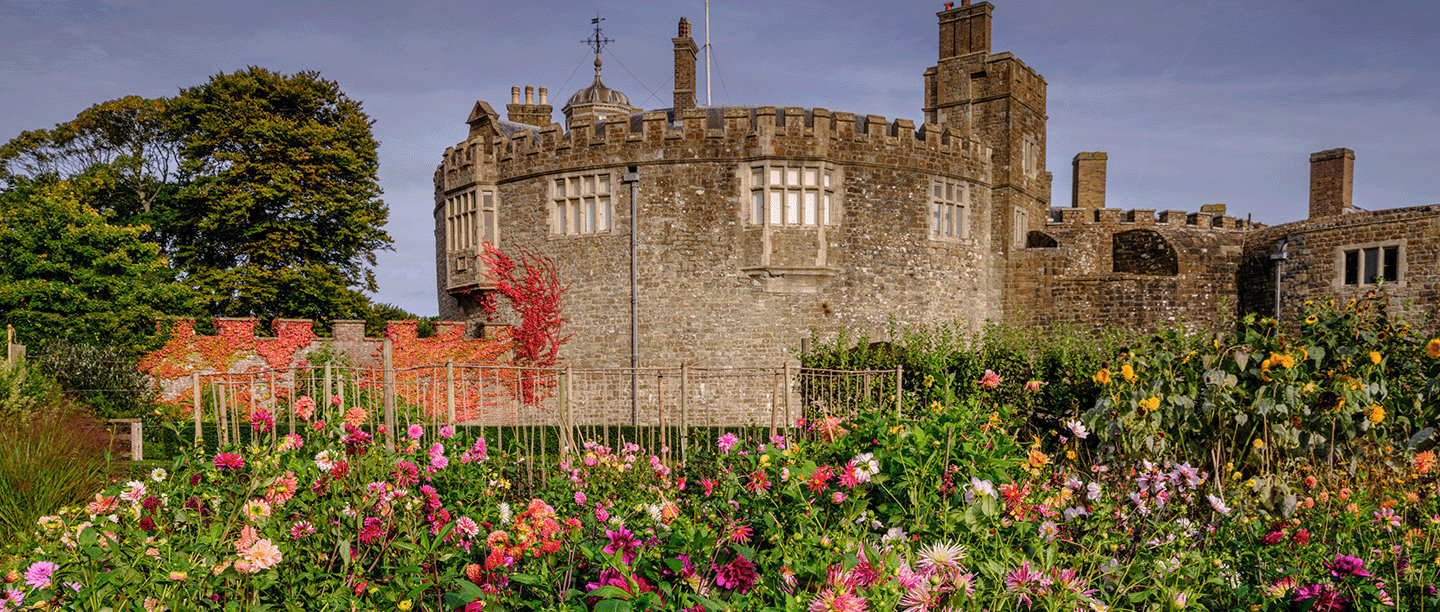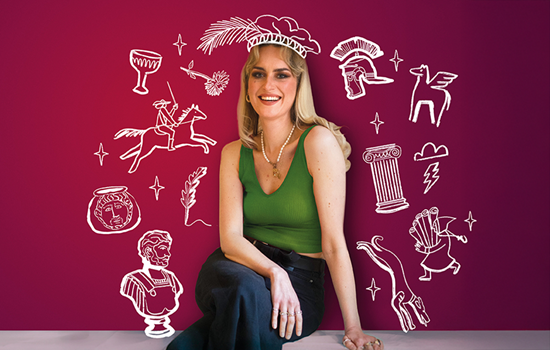EXPERIMENT WITH TEXTURES AND COLOURS
In the kitchen garden, we often experiment with textures and colours, particularly with our salad crops, by displaying and planting in slightly different ways, which the visitors really enjoy seeing. To make harvesting easier and to help rotate the crops quickly, we plant in blocks and small rows, following a geometric formal style. Within these we often alternate varieties: it not only looks fun, particularly with the lettuce, but helps us be more efficient in our management of the crop.
Solix and Jabeque are two really good early lettuces that we grow. The Solix has an oak leaf that is red and, as the sun intensifies, so does the colour. It almost goes purple. And Jabeque is an upright green lettuce. The two together look stunning. For late season lettuce, try Red Iceberg or Reine de Glace, which both last well into late autumn and early winter.
SOW SMALL AMOUNTS
We sow most of the salad leaves, lettuces, beetroot and celery on a regular basis but very small amounts just to keep them productive. Some salad crops are quick to bolt (where the plant grows too quickly in dry, hot weather and wants to flower and set seed). To help avoid this, check information on the seed packet before you buy, and sow earlier in the season if required. Keep watering in dry weather and mulch.
With our other vegetables, which are in the ground for a much longer period than salads, we only do one sowing, in the spring. Choose an area where they will not be disturbed but you can still look after them. A good way of incorporating them into your garden is by creating a potager (mixing flowers and vegetables together in border). It’s a French method dating back to their Renaissance period and can look very colourful.
YOU ONLY NEED A TINY SPACE
Even in a small space, there are lots of different things you can do – you just have to be inventive about what you grow things in. You can buy special growing potato sacks, which are only about the size of a large bucket, and you put just a few potatoes at the bottom of them and keep topping them up with compost. I’ve got some at home, they’re really good.
Tomatoes can be grown against a wall, so long as the roots are kept fairly moist and they’re well mulched, as tomatoes are really thirsty. Salad leaves are great, too. You only need a little container – even a window trough will do. Lots of seed companies supply great mixes with a varied combination of leaves, some of which are spicy. Just sprinkle it along a window box. If you do cut salad leaves, they’ll regrow a few times as long as you sow them early. You can get maybe a month’s supply out of them.
AVOID WASTAGE WITH MINIATURE VERSIONS
We have gone towards mini cucumbers now because they’re much sweeter than the longer ones you might get in a supermarket, and there’s no wastage because they’re only about six to eight inches long. Two really good varieties are Passandra and Socrates, both of which produce loads of small sweet cucumbers.
They’re highly yielding, so are very productive, producing lots of little baby cucumbers. It’s great because you can keep picking. They are very thirsty, so we mulch everything quite heavily. Things like cucumbers also need feeding regularly. Many of the more recent varieties of tomatoes (such as Microcherry), sweet peppers (such as Mini Belle Mixed) and aubergines also produce smaller fruits. They are often sweeter and can be grown in containers.
GROW DIFFERENT APPLES FROM ONE TREE
Family apple trees are ideal for a small garden. They consist of two to three compatible varieties grafted on to a semi-dwarfing rootstock. A good family tree with a long season of three delicious crisp apple varieties would be Discovery, James Grieve and Sunset.
The most important thing to do is to buy trees from a reputable nursery. In terms of soil preparation, you just need to make sure that you’ve got good quality soil, you add organic matter and then just look after the tree for the first year – keep it mulched and watered. Most trees these days are on a dwarfing rootstock, so they’re suitable for people’s domestic back gardens.
WARD OFF SLUGS WITH HEALTHY PLANTS
Many of our visitors often ask how we keep the slugs from eating the plants. At Walmer we don’t direct sow anything. Instead, we sow under cover in modules, away from the planting area, and look after them. It’s really important to have strong healthy plants. Once you plant them out, some of the leaves might be susceptible to slugs but, on the whole, it’s a stronger plant and it will grow and be productive for you.
So we sow in small modules – you can buy little trays that are divided up into sections – or just sow in seed trays. Then you can pot into smaller pots and get the plant looking healthy, so it’s about four to five inches tall with lots of leaves, ready to go out as a strong plant. We do that for everything!
PLAN A VISIT TO WALMER CASTLE AND GARDENS
See the kitchen garden for yourself during a visit to Walmer Castle and Gardens. You can also enjoy the extensive pleasure grounds adn explore the castle itself, which was the Duke of Wellington’s home for 23 years.
Why not end your visit with a trip to the tea room, where you can try out some of the produce grown in the castle’s kitchen garden? You can also combine going to Walmer Castle with a look around Deal Castle, which is a gentle mile-and-a-half stroll along the Kent coast.
plan your visit


